Bluegills are prone to overpopulation. This is accepted knowledge among many anglers.
If you don’t catch and keep a lot of bluegills out of a pond, you’ll often hear a fisherman say, the bluegills will overrun the place. You’ll soon have a pond full of runty, stunted fish.
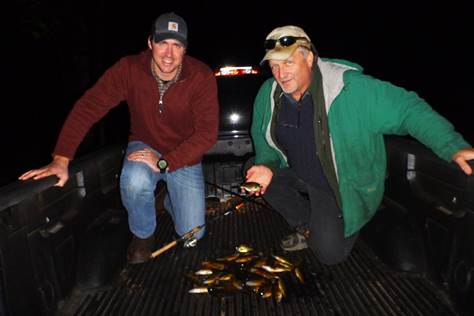
This is why the bag limits for bluegills are typically very liberal – it is not unusual to be able to keep 25 fish a day. It’s the angler’s duty to catch and eat as many as possible – keep the herd in check, if you will.
It sounds good, but current research suggests it’s wrong.
In fact, research conducted by Andrew Rypel, research biologist with the Wisconsin Department of Natural Resources, suggests the opposite: that liberal harvest limits on bluegills actually decreases the size of fish.
“Fish Here Aren’t As Big As They Used to Be”
Bluegills are often the first fish many anglers encounter (including me). They are common in farm and urban ponds. They’re the fish kids catch with a Mickey Mouse rod, a bobber and worms.
In the spring, many anglers target them on their spawning beds, where the biggest males are often easy to catch (see yesterday’s blog for the full details on this spectacle).
Bluegills are also popular because they’re tasty. Anglers call them and similar-sized species – crappies, perch, other sunfish – panfish. They’re the perfect size to fit in a frying pan.
Rypel and his colleagues in Wisconsin noticed something over the years: Anglers reported decreasing size of bluegills and other panfish. Of course, conventional angling wisdom would suggest the solution to this would be to harvest even more bluegills. After all, decreasing size is a sign of overpopulation.
Research tells a different story.
Rypel analyzed size trends going back to the 1940’s, and found that bluegills (and other panfish species) steadily declined in size over a 70-year period.
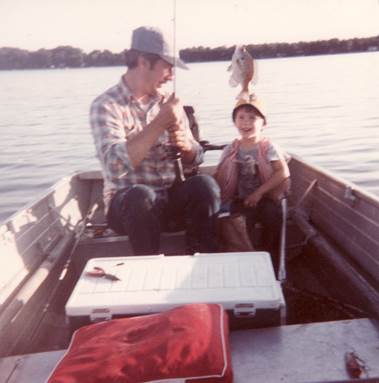
“The regulations are relatively liberal,” he says. “I thought one possibility might be that we were fishing them too hard. As we looked at the data, we found that evidence of bluegills becoming stunted because they were overpopulated was not as common as previously thought.”
Fishing pressure, particularly on spawning beds where bluegills are most vulnerable, can be intense. And that pressure may be decreasing the size of fish.
In response to the trend, the Wisconsin DNR reduced the bag limit to 10 fish on 10 lakes as a test. Researchers, including Rypel, analyzed fish size before and after the regulation.
They found that fish size increased on average a half-inch on maximum size and .8 inch on mean size.
That may not sound like much, but consider that a typical bluegill is six or seven inches, and a really large one is ten inches.
Rypel published the findings in the North American Journal of Fisheries Management.
A New Experiment in Bluegill Management
The next phase of the project is to implement new management strategies on 100 Wisconsin lakes. One third will have a reduced limit of 10, one third will have a reduced limit of 5, and one third will have a reduced bag limit only during the spawning season.
The management regimes will run for ten years. “We’re going to find out what different regulations can do for panfish size,” says Rypel.
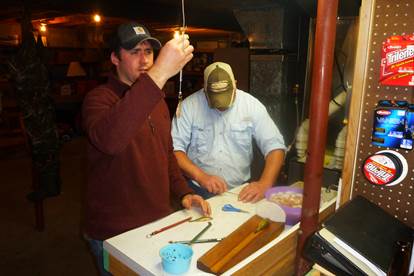
The good news is that bluegill size rebounds when fishing pressure decreases. A study by Rypel in collaboration with researchers at the University of Wisconsin-Milwaukee, School of Freshwater Sciences found that the reduction in size was not likely due to a shift in genetics, as has been shown to be the case in some other prominent studies on fishing pressure.
Anglers have, in general, been reluctant to embrace size limit reductions. Rypel points out that the limit reductions may actually result in more meat harvested. That may seem counterintuitive, but it’s true. “As bluegills get bigger in length, they get exponentially bigger in weight,” he says. “So if you catch a few larger bluegills, you often get more meat than if you caught a bunch of smaller ones.”
There is still a lot biologists don’t know about bluegills. New research will likely call for more changes in fishing regulation, but Rypel acknowledges that science is only one part of fisheries regulation.
“Regulations are a blunt instrument,” he says. “They cannot account for all aspects of fisheries management. If they get too complicated, they become much more difficult to enforce. We want regulations that are easy to understand and easy to enforce. There are trade-offs. In this case, reducing the bag limit could help the resource tremendously while still meeting the expectations of anglers.”
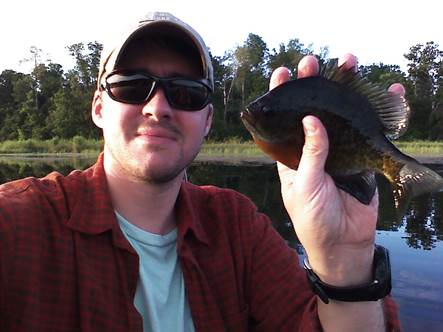
And while the bluegill may seem an unlikely symbol for global fisheries management, what Rypel says applies to large commercial fisheries as surely as it does the local farm pond. Regulations are only ever partly about science, and they can never fully account for the complexity of a fishery.
The key for resource managers is to use sound science to create regulations that work best – for fish and for people.
“Bluegills have the opportunity to get bigger with a relatively minor shift in fishing regulations,” says Rypel. “Our research is providing the evidence that it benefits anglers, too. The findings seem counter-intuitive to many anglers, who have long believed that smaller bluegills was a sign of overpopulation. But perhaps our long-term studies can convince them that lower bag limits can mean better fishing, and bigger panfish fillets for the fish fry.”
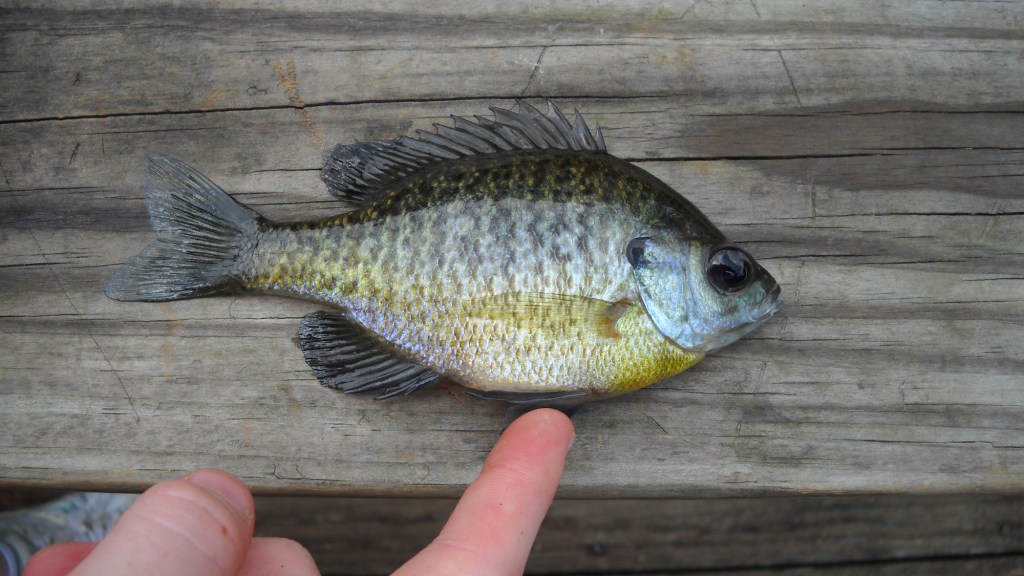



Your observations Greg are good ones I believe. I’ve read studies that have shown protecting the large male nest guarders and focusing the harvest on smaller bluegills has been effective in restoring size balance to stunted bluegill lakes. The large male bluegills have the quality genetics a lake needs passed on, and they are the superior nest guarders ( also making them easily caught). If released, he is back “on station” over his nest in about 2 seconds. If kept, his nest is raided immediately, he and his nest are lost. In a lake full of stunted bluegill, perhaps focusing the harvest on the many small fish and protecting the quality larger fish is the answer to restore bluegill size quality.
I’m 71 years old and have been an avid pan fisherman all my life. I am an avid fly fisher and have tied my own flies and poppers since I was 10. Like most pan fishers I used to release females during the spawn but slay the males, especially the big old bulls. Now that I have aged and enjoy watching the unique bluegill spawning ritual I realize the role the large males play in the spawn. I enjoy the battle for the nest spot and the ensuing actual egg laying firtalization process. The most important thing I learned was the minute dominate male was taken from the bed small gills, crayfish and other predator fish cleaned the contents of the bed out therefor a dead nest. Upon retirement my wife and I bought a lot on a 40 acre inaccessible northern Wisconsin lake, it’s substrate is sand and gravel but is covered with 4 to 6 inches of muck. I have cleaned up several spots close the dock area and the gills immediately took the area over and have spawned as much as 4 times during the spring and summer. What I’m doing seams very fullfiling and productive and I hope its the right thing to do. I often paddle my canoe around the perimiter of the lake and have found very few bluegill spawning sites. I welcome any constructive comments or suggestions on what I am doing.
Though well-intentioned, the DNR may have issue with you disturbing a lake bed if you did not get their permission.
Nothing like the scientifically uninformed journalist. A lot of claims were made and accepted without question. The experiment cited involves uncontrolled natural experimentation with a ton of uncontrolled variables – the variations in fishing on the various lakes, fish density, number taken, and those quoted size changes are nothing but estimates, error factor unknown. The experimentation period was far too short to allow for any conclusions, only suggestions for further research. No mention of effects of size limits as well as bag limits. These researchers have a lot of work to do and more carefull scientific actions, before they can say anything that will achieve even strong plausibility, much less solid facts. Simple common sense will tell you that if the number of blues exceeds the amount of food available, the fish are going to be smaller – what’s needed is information as to when food scarcity becomes an issue – feeding conditions change and setting cast iron bag limits makes little sense, it would seem. At least the researchers seem to understand that they are in an area of unknowns.
Very interesting article I have personally found that in relatively small body’s of water i fish say under 5 acres the percentage of ten inch or bigger bluegill goes way up if there are a lot of bass around the 2-3 lb range when compared to other ponds with a bass population that has 5-7 lb bass or bigger Just my two cents thanks
Name correction for previous submition on blue gills, and a post note: bass and bluegills inhabit the same space but even as a predator , bass will rarely eat a bluegill over 3 or 4 inches because of their spines, so counting on them to thin the “herd” isn’t always successful. Even bass are susceptible to “stunting”.
I fished a 4 acre pond with many 12 inch fish, eventually I decided to remove 25 -12 inch fish. The following year the 12 inch fish were now 14 inches. So size management will work if properly conducted. Granted what I did was not a controlled experiment but it gave me insight to size verses numbers! HK
Conservation Depts can’t always pass rules that work. Fishermen need to do their share. “Keep the big ones and throw the little ones back to grow up” is a concept that was used for years. If “keep some of the smaller ones and put the larger ones back to reproduce, the genetics would help to overcome the stunted theory. The problem is many “sportsman” take what they want and don’t consider genetics. Manytimes because of this you DO wind up with a bunch of full grown midgets. HK
The biologist merely noticed a correlation in a single study with an admittedly small sample size. Correlation is not causation. Any number of other variables, including improper sampling, may have been the cause for the one inch increased growth experienced during the sample period. If this were a controlled experiment in a tank with limited continuous food supply and a population of bluegill, the results would disprove the hypothesis of this biologist; unless bluegill is the one species of fish that has the spectacular ability to survive and grow while malnourished. (If that were the case, abundance and size would never be in question). Because the conclusion reached by the biologist defies all logic known to mankind about the overpopulation of any species, I would immediately question the experimental method and the sampling method used.
What are other possible reasons for undersized bluegills?
1) Perhaps they are not undersized and there has been a decrease in fishing skill or effort needed to consistently locate larger specimens.
2) Perhaps there has been an increase in predation of bluegill causing less bluegill to reach adulthood; often a result of other stricter limits placed on predator species along with a growing popularity of “catch and release”.
3) Abnormalities in the cyclic weather pattern could be responsible for the noticed change in growth as well as the experienced increase during the sampling time.
4) Changes in availability of the food source of the bluegill that are not directly related to the population of the bluegill.
It must be realized that changes in limits may have no noticeable effect on the number of bluegill removed when compared to the number of bluegill removed from previous years. If the number of bluegills kept by fisherman in the previous years has not been studied, how can we accurately draw any conclusion by manipulating this variable? How many people have been fishing and keeping a limit? How many were only catching a fraction of a limit? Is it possible that the guy who was keeping a limit of bluegill once every two weeks will now keep a limit of bluegill every week? Is it possible that the change in limits themselves will cause a negative change in popularity with bluegill fishing resulting in much few fish being taken? Can we compare the number of fish being kept now to the number of fish being kept before the limit change; no, the change has been made before the data has been collected. Is it possible that any variable could change during the time limits are lowered causing a sudden and unrelated size increase in the bluegill? Of course, but now that increase will automatically be attributed to the stricter catch limits which will be used support to future restrictions.
I personally hypothesize that unless there is a commercial fishing presence or a sudden increase in the popularity of fishing for a singular species, changes in legislation do little to control size and quantity of a single species of fish. Due to the complexities of an equation involving constantly changing variables some of which are not controlled by humans, it is impossible to prove or disprove the effect limit changes. Sportsman should start to demand better science from the biologists; especially when they are dictating the available privilege.
I can see a size reduction caused by over harvest, but most 1-7 acre ponds, that are seldom fished, offer only very small gills. My uncle had a less than one-acre pond with many big gills. He instructed to always throw the small ones behind us. The fish were always big. An attitude, of many pond owners, seems to be one of over-protection. Too many fish often results on winter kill where I live.
This is a very interesting article. When I first started fishing in Ontario I had no idea what a Bluegill was. (and I thought these fish were very ugly) I am from the North Shore of the Saint Lawrence in Quebec (now live in Montreal) and have fished primarily for Trout, Sea Trout and Salmon. Was a Salmon fishing guide in my 16th and 17th years of life.
I always go for the big species, Lake Trout, Pike and Walleye. My wife’s brother came with us one year and showed us that you can always catch supper by going for pan fish. Perch, Bluegill, Bass and even Rock Bass, skinned and filleted can produce a great tasting meal. They also have been in the Lake a short time so have less contaminants. Long live the Bluegill, great eating and any new articles on preserving and increasing their size and abundance is great.
Researchers are heading in the right direction, but are not quite there yet. The smart move would be to set a max size limit, and a minimum size limit, and none or a fairly liberal bag limit.
From natures side it is always been that the biggest and fastest growing are the ones that survive. Humans flip that around because we target the largest fish first.
Over populated lakes are an indicator of there not being enough predators, and the predators mostly go after the smallest and the weakest / easiest catch. In lakes and ponds without predators the gills will naturally form an over populated stock. In lakes with predators the total population of fish will over time create it’s own balance which will fit the lakes ability to provide basic nutrition to the ecosystem in the water system.
If we want a good and healthy stock of large fish and good production of eating fish, we should always work with nature in stead of against. This means that we have to target the fish we can use for food, and release the fish that are needed to keep the population healthy with reproduction and a nice stock of large fish.
Interesting article and good comments. As I have completed a lot of highly detailed lake survey work in North Central Wisconsin, I’ve noticed a decline in the available well placed habitat in the littoral zone. Bluegill very commonly use this zone for reproduction, exploitation of appropriate abiotic conditions, feeding and avoiding predation. As our lakes age, and people “clean up” their shorelines, less and less is available for the fish in the right locations. I do not discount the bag limit theory, but I do believe that there is way more to it than one variable. These ecosystems are very complex, and the methods still being used to try to understand them are outdated. I do think it is great for our lakes that the discussion is occurring.
Kudos!! Most management policies need challenging!
Wow…everything ever known about Bluegill management prior to the study reported here is apparently wrong. Hyperbole much? Well, as long as Matt is sticking his neck out, why not me? I’m going to claim that 14 lakes in Wisconsin does not tell the whole story for bluegill management across North America.
I could ask how well stratified the study reported here was with regard to fishing pressure, predator populations, competitor populations, water body size…and so on. So, in a heavily fished lake with a population of bluegills displaying a small size structure for their age, it should not be at all shocking that reducing fishing pressure would increase the population of larger fish. The idea that this piece of “news” would somehow turn modern fisheries management on it’s head is sad….just sad.
More typically, when the suggestion is made to anglers that the sunfish in their body of water are “stunted” and they need to keep more “small” fish, it’s because the body of water being considered is a farm pond that isn’t getting much fishing pressure.
Wisconsin is willing to experiment with bluegill bag limits. I would suggest they go further. Pick a few lakes – just enough to see if it is worth expanding the experiment to more lakes – and implement the following regulations:
1. For a few lakes – Closed to any fishing during the bluegill spawn. Normal regs and limits at other times. Hypothesis: measurable increase in bluegill size, more so than in lakes with reduced limits.
2. For a few lakes – Catch and release for bluegills during the bluegill spawn. Normal regs and limits at other times. Hypothesis – measurable increase in bluegill size, less than in lakes closed during spawn (sneaker males can sneak in while a parental male is gone from the nest even temporarily), but more than in lakes with normal regs.
With only a few lakes in the study, the sample size will be too small to be definitive, but the results might be sufficient to determine if a larger study with more lakes would be valuable, and it might take only a few lakes to determine whether angler acceptance (although anglers do accept closed seasons for trout in Wisconsin).
https://dnr.wi.gov/topic/fishing/documents/outreach/PanfishFactSheetMay15.pdf
Your wish………
I read this article and am still asking the question, “How does increasing the population increase the size of the fish, especially if there is a limited food supply for the fish?”
Charles…since neither the author of this article nor the people who did the actual research have answered your question, I’ll make a wild guess. Why not? You ask a very good question. “How does increasing the population increase the size of the fish?”
My answer: 1) The sampling methods used to obtain average fish size are biased towards collecting larger fish.
2) The lakes chosen for the study are heavily fished, such that the number of fish is limited by anglers take and not food supply.
3) Water bodies with a fish population that is limited by food supply will not see an increase of fish numbers by restricting fishing pressure.
Forgot to add that typically…anglers cull their catch. By that I mean, they keep the large ones and throw the small ones back. So, anglers remove the larger fish from the population. Reducing the bag limit should increase the number of larger fish in the population. That is Fisheries Management 101. Does it always work to do this? No…not when the fish being managed are stunted because they limited by food supply, and/or lack of predators, and/or low fishing pressure…or anglers don’t keep their catch and throw it back.
So…how do you know whether the population of fish in question is stunted from lack of food…or the fish are small because fishing pressure is high and removes all the large specimens? You can use angler surveys to get some sense of the pressure anglers are putting on fish. You can also measure size and age a sample of fish to produce an age -size distribution to compare to water bodies you know have a good size distribution of that species. So, if the fish you collect for a sample are all young, but a decent size for their age…fishing pressure may be removing the older fish. If on the other hand, you find older fish that are quite small for their age…might indicate stunting from lack of food.